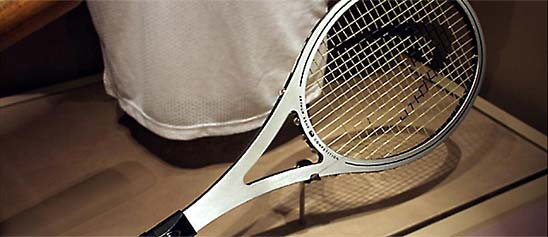Watercolor drawing by Rube Goldberg for the single cell cartoon Predictions for the Year 2070 A.D., 1970.Considered to be Rube's last cartoon, this watercolor drawing looks humorously at problems with politics, women's liberation, scientific invention and the generation gap, and
- Description
-
Watercolor drawing by Rube Goldberg for the single cell cartoon Predictions for the Year 2070 A.D., 1970.
-
Considered to be Rube's last cartoon, this watercolor drawing looks humorously at problems with politics, women's liberation, scientific invention and the generation gap, and the potential for those issues to continue for at least one hundred years.
-
Rube Goldberg (1883-1970) was best known for the invention comic art series The Inventions of Professor Lucifer Gorgonzola Butts that he created for local and national newspapers between 1914 and the 1964. In a career that spanned more than half a century, he created some 50,000 individual and series cartoons. His subjects included American politics, sports, and everyday, timeless concerns. As he said in 1940, "Humor comes from everyday situations, because nothing is as funny as real life."
-
His best-remembered invention comic series looks at everyday life and our love-hate relationship with technology. The series reminds us of the disquieting feelings we have when using new mechanical devices that offer progress while taking away the comfort of an acquired skill or an older way of performing a task. The automobile, the airplane, the telephone, and the radio, among other conveniences, had not been invented when Rube Goldberg was born in 1883. They were world-wide and life-changing innovations by the 1920s, to which everyone was becoming accustomed. The inventions promised hours of entertainment and freedom, but at the same time created fear and feelings of loss of human importance.
-
Along with the more common fear that the new technologies would take the place of manual labor and human intelligence, Rube Goldberg also came to believe that individualism was disappearing. The more we gave in to the use of innovations and commodities, he felt, the less room there was for our individual perceptions, concerns, and activities. In 1921, for example, he declared that the telephone had "superseded the dog as man's best friend."
-
Another of Rube Goldberg's continuing themes touched on the humor of man's situation, even to his last cartoons; that nothing really changes no matter how persistent we are, and that man has a "capacity for exerting maximum effort to accomplish minimum results."
- Location
-
Currently not on view
- Date made
-
1970
- original artist
-
Goldberg, Rube
-
Goldberg, Rube
- ID Number
-
GA.23483
- catalog number
-
GA*23483
- accession number
-
1972.299186
